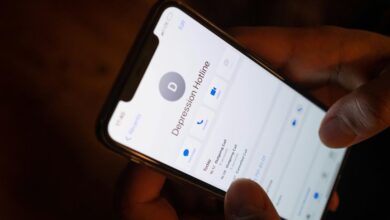Check Caller Identity Fast: 3174269344, 3175504434, 3175548779, 3175586282, 3179395243, 3183544192

The increasing prevalence of unsolicited calls necessitates efficient methods for verifying caller identities. Numbers such as 3174269344, 3175504434, 3175548779, 3175586282, 3179395243, and 3183544192 may require immediate scrutiny. Utilizing reverse phone lookup services and caller identification applications offers a systematic approach to discern the legitimacy of these calls. Understanding the effectiveness of these tools can significantly influence personal security and privacy management. What strategies can enhance this process further?
Understanding Caller ID and Its Importance
Caller ID serves as a crucial tool in modern telecommunications, providing users with essential information about incoming calls.
This caller ID technology enhances user autonomy by allowing individuals to screen calls, thereby increasing personal security.
However, its implementation raises significant privacy implications, as the ability to identify callers could lead to misuse of information, potentially infringing on individual rights and freedoms in communication.
How to Use Reverse Phone Lookup Services
Utilizing reverse phone lookup services involves accessing specialized online tools designed to retrieve information associated with a phone number.
Users must input the desired number into the search interface, which processes the query to generate relevant data.
Interpreting the search results requires an understanding of the various details provided, including caller identity, location, and possible associated records.
Accessing Reverse Lookup Tools
Accessing reverse phone lookup services can significantly streamline the process of identifying unknown callers.
By utilizing various online directory options, users can enhance reverse lookup accuracy and efficiently trace the origins of incoming calls.
These tools often provide essential information, such as the caller’s name and location, empowering individuals to make informed decisions about whether to engage with the unknown number.
Interpreting Search Results
How can users effectively interpret the results from reverse phone lookup services? Understanding the output relies on the efficiency of search algorithms employed. Users should assess call accuracy against multiple data points provided. The table below illustrates common results and their implications:
| Result Type | Implication |
|---|---|
| Name | Identifies caller |
| Location | Confirms area of origin |
| Carrier | Reveals service provider |
| Spam Rating | Indicates potential spam |
| User Reviews | Provides additional context |
Popular Apps for Caller Identification
The landscape of caller identification is populated by various applications, each offering unique features aimed at enhancing user experience.
Key factors to consider when evaluating these apps include their core functionalities and the implications for user privacy.
Understanding these aspects is essential for selecting an effective and secure caller ID solution.
Top Caller ID Apps
While many smartphone users seek to enhance their calling experience, selecting the right caller ID app can significantly improve their ability to identify incoming calls.
Top caller ID apps vary in features, necessitating thorough caller app comparisons. Key factors include user interface, database size, and caller ID accuracy, which ultimately determine the effectiveness of these applications in providing reliable caller information and reducing unwanted disturbances.
Features to Consider
Selecting an effective caller ID app involves understanding various features that enhance user experience and caller identification accuracy. Key considerations include caller verification methods like number lookup and user-generated feedback, alongside advanced caller features such as spam detection and call blocking. These elements significantly improve the app’s utility and reliability for discerning legitimate callers from potential threats.
| Feature | Description |
|---|---|
| Caller Verification | Methods to confirm caller identity |
| Spam Detection | Identifies and blocks unwanted calls |
| User Feedback | Community-driven rating of callers |
User Privacy Concerns
Privacy concerns have become a significant consideration for users of caller identification apps, as these applications often require access to sensitive personal information.
User privacy is jeopardized without robust data protection measures and compliance with privacy regulations. Additionally, caller anonymity can be compromised, increasing the digital footprint.
Effective consent management is essential to ensure online security and maintain user trust in these applications.
Identifying Scams and Robocalls
Scams and robocalls have proliferated in recent years, leading to a significant rise in consumer concern. Effective scam detection and robust robocall strategies are essential for safeguarding personal information.
| Scam Type | Red Flags | Response Strategy |
|---|---|---|
| Phishing | Urgent requests | Verify sender identity |
| Lottery Scams | Unsolicited winnings | Report and block number |
| Impersonation | Unexpected callers | Hang up and investigate |
Reporting Unwanted Calls
The rise in unwanted calls has become a pressing issue alongside the increasing prevalence of scams and robocalls.
Reporting these unwanted calls is essential for mitigating their impact. Users can leverage call blocking technologies and report incidents to relevant authorities, which may lead to regulatory action.
Collectively, these efforts enhance consumer protection and contribute to a broader movement against unsolicited communications.
Tips for Protecting Your Privacy
How can individuals effectively safeguard their personal information in an increasingly interconnected world?
Prioritizing privacy settings across digital platforms is crucial for data protection. Regularly updating passwords, enabling two-factor authentication, and limiting data sharing can significantly enhance privacy.
Additionally, utilizing privacy-focused tools and services empowers users to maintain control over their information, fostering a sense of freedom in navigating the digital landscape securely.
Conclusion
In a world increasingly plagued by unsolicited calls, the need for effective caller identification strategies cannot be overstated. As individuals navigate through the uncertainty of unknown numbers, each ring carries the potential for either connection or deception. The tools and techniques discussed serve as vital defenses against the rising tide of scams and robocalls. Will you be prepared to face the next unexpected call, or will you remain vulnerable to the dangers lurking on the other end? The choice is yours.




